India's farmers beating climate change with technology
- Published
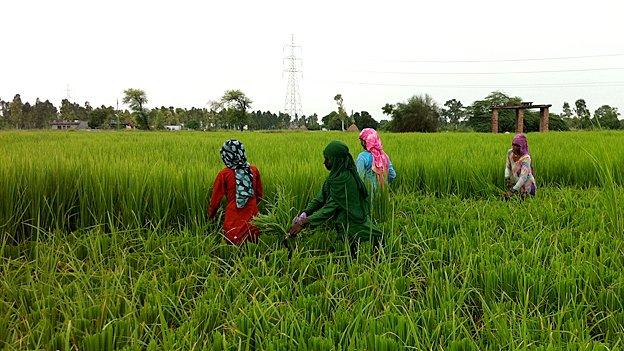
Harvest festival: About half of India's population relies on farming for employment
It's the end of the monsoon season in India. But it's not been a good year.
During the sowing and planting season, when water was needed the most, rain was largely absent.
Now it's nearly harvest time and it has been raining heavily.
But for farmer Lovepreet Singh in the northern Indian state of Haryana, all is not lost.
He has been getting help from new technology, like the GreenSeeker - a handheld gadget that works as a crop sensor.
As Mr Singh points to a patch of crops, the sensor emits brief bursts of red and infrared light.
By measuring the amount of each type of light that is reflected back from the plant, the device can calculate and display the health of the crop.
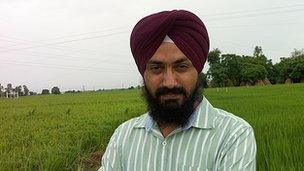
Lovepreet Singh says using technology has saved some of his harvest
He uses it to assess how much nitrogen the soil needs in each section of land.
This is just one of the gadgets he uses, meaning that what might once have been a disastrous harvest is not looking as bleak as it could have done, according to Mr Singh.
"Using technology has helped us a lot," he says.
"I get better weather forecasts so I can plan when to sow seeds or spray the plants. Otherwise I would spend a lot of money and labour on my fields and unexpected rains would just wash everything away.
"While my profits haven't gone up dramatically, technology is helping me reduce my losses."
With more than 50 acres of land, Lovepreet Singh's entire family lives off the farm. Like him, most people here are completely dependent on agriculture for their livelihood.
But not everyone can afford to invest in expensive technology - the GreenSeeker comes in at nearly 40,000 rupees (£400; $680)
So the local agriculture society helps them by procuring it and letting farmers use it for free.
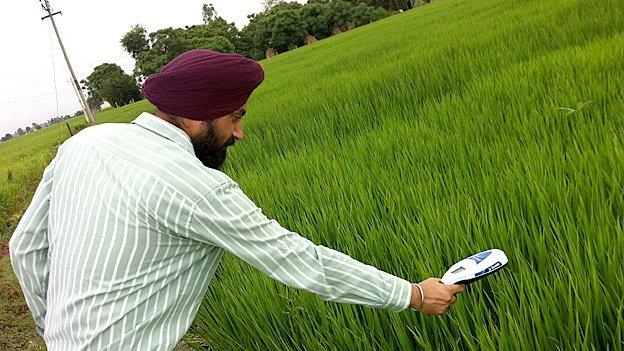
The GreenSeeker is a crop vigour mapping system, which lets farmers know precisely how much fertiliser to use
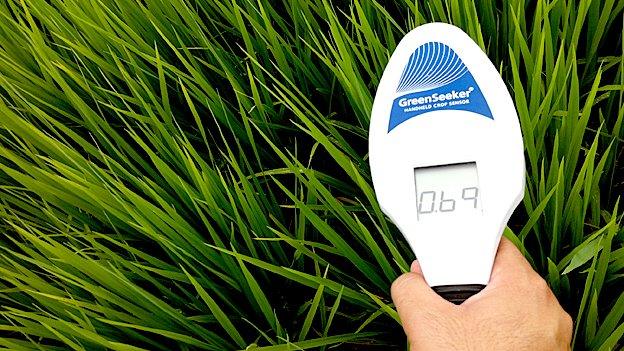
The company claims that the device can increase yields by up to $32 a hectare
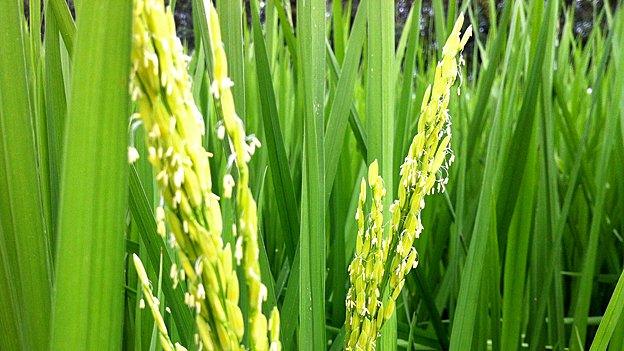
Rice ripening in the paddy fields of Haryana, in northern India
Smooth it out
They are also using another new technology in these parts, called laser land levelling.
Laser-controlled devices are mounted on tractors, and these help farmers level the land into a flat surface. This method of tilling helps them save 25-30% of water during cultivation.
Another method to save water and labour costs is to introduce direct seeding by machine for the paddy crop.
This replaces the usual method of making paddy nurseries and then transplanting the seedlings manually.
Traditionally, Indian farmers spend a lot of money hiring labour after every harvest to clean the residual crop.
Shilpa Kannan visits farmers in Haryana
They then make huge piles of the waste and burn them - polluting the environment and often creating a thick, grey smog over cities like Delhi.
Now, to avoid burning the crops, "happy seeders" have been introduced.
These are attachments mounted on tractors, that help sow wheat even when the paddy residue is still standing on the fields.
The state government has introduced a subsidy to help farmers buy the machine, as it costs over 100,000 rupees.
Leaving the crop residue in the fields helps increase the organic matter, better controlling moisture and temperature levels.
Old friends
It's not just technology that is helping.
Surrounded by lush green farms in Karnal, Haryana, it is hard to imagine that farmers here could be worried about climate change.
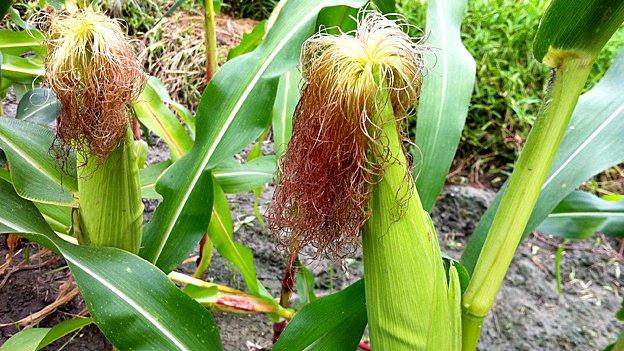
Maize had been grown in the area for many years, and is now making a bit of a comeback
Once known as the grain basket of India, farmers here are now worried about a lack of fertility in the soil, and decreasing groundwater levels.
Experts have warned that the impact of climate change means that in the coming years, the yield here will go down significantly. Rice farmers in the area are the first ones to be affected.
One way to combat this is to reintroduce traditional crops such as maize, which was once a staple here.
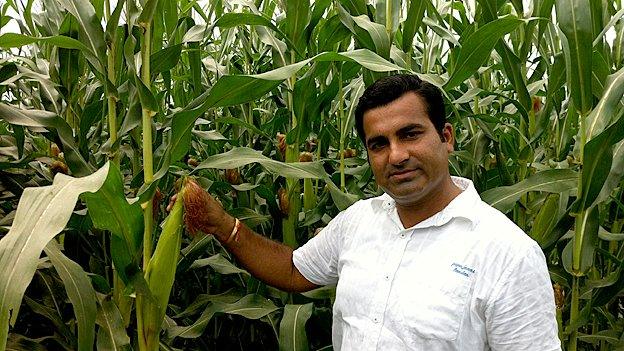
Vikas Chaudary with his maize crop
Thirty-four-year-old Vikas Chaudary has planted rice, maize and wheat.
He not only monitors water levels, but has installed a micro weather station in his field.
Maize was once considered a poor man's food but now it is in demand, much of it going to China as poultry feed.
The area where maize is grown has almost doubled in Haryana in the last few years. It is now selling for about the same price as rice and costs a lot less to grow.
"Switching to maize has been my best decision so far. My forefathers once grew only maize here before the whole region switched to basmati rice," he says.
"I still grow some rice but I have switched half my fields to maize because this uses at least 70% less water compared to a paddy crop. We can harvest it a month faster too, saving us a lot of money."
Be 'climate smart'
Taraori is one of dozens of villages in this state to start adapting the way they do things as a result.
The village is part of an initiative led by the global consultancy, Climate Change, Agriculture and Food Security (CCAFS) in India.
People here have been helped to move to so-called "climate smart'' technology, trying to mitigate the impact changing weather patterns are having.

Maize and rice now grow side by side in the area
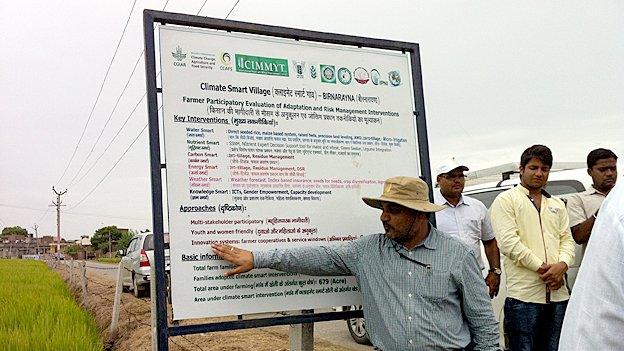
The village is part of an initiative to introduce farmers to technology that takes on climate change
The Asia Development Bank recently warned that the impact of altered weather patterns could cause huge damage to the Indian economy, wiping off the equivalent of about 9% of GDP each year by the next century.
So it is critical to adapt, says Surabhi Mittal, an agricultural economist from the International Maize and Wheat Improvement Centre.
"A two-degree increase in temperature is going to impact the yield of wheat the most," she says.
"That means the producers and consumers are going to suffer. Wheat yields might go down. That means food prices are going to be higher for consumers.
"That also means that there is a huge additional subsidy that the government would have to bring in."
The local government is slowly changing its agricultural policy to recognise the effects of changing climates.
And while not all farmers here have switched to new techniques, seeing neighbours who succeed when they do so is bound to be a strong incentive.